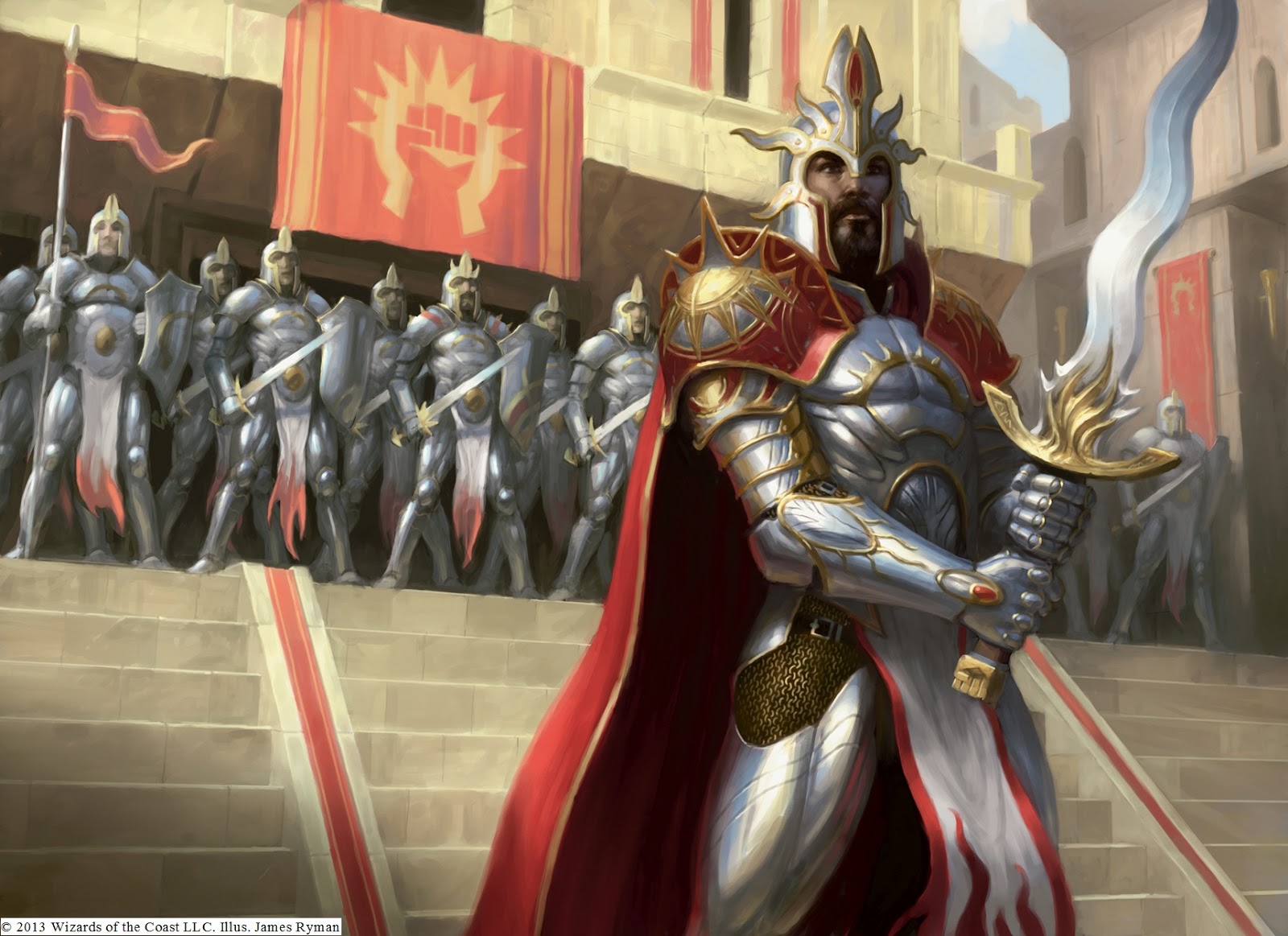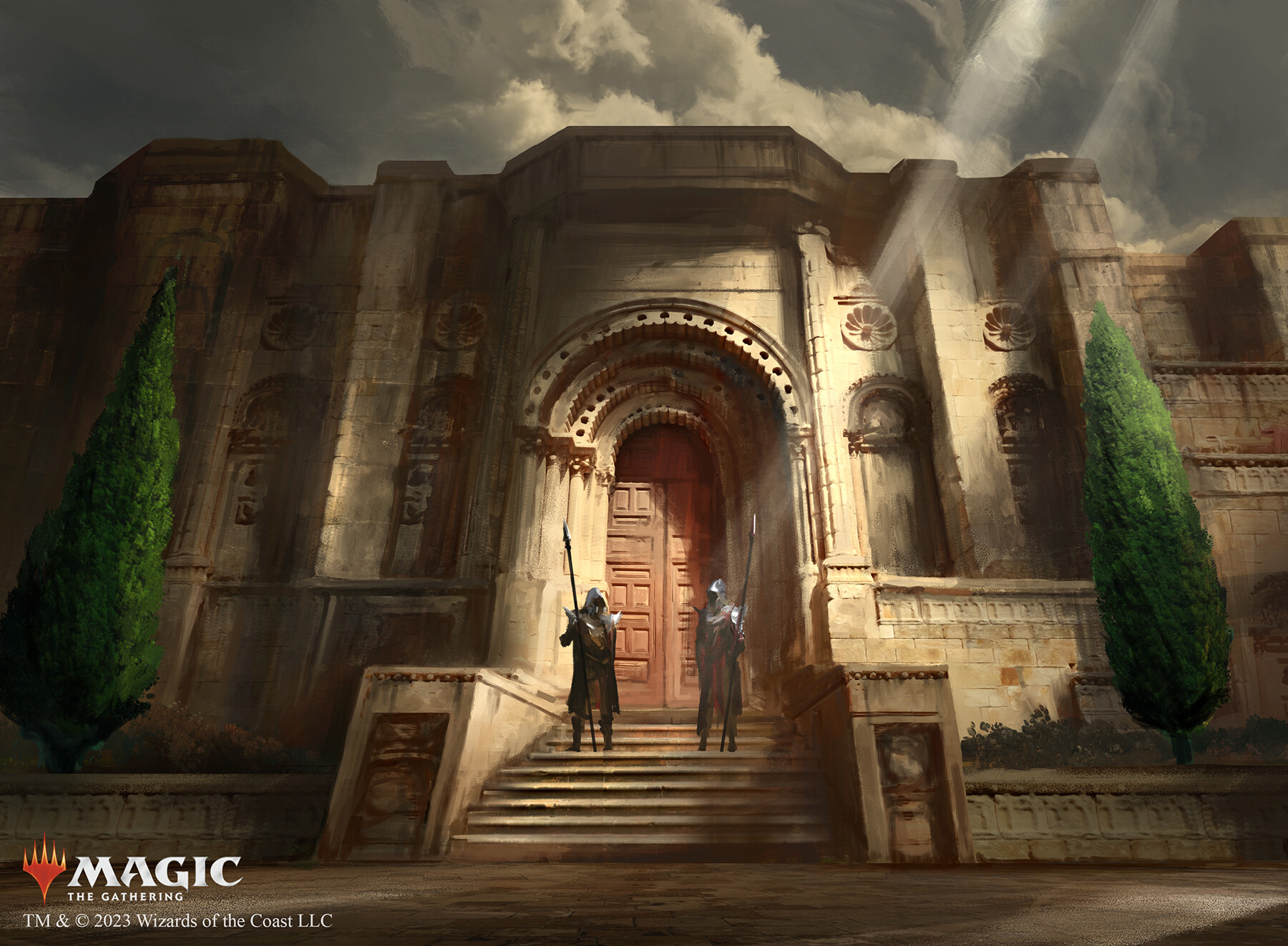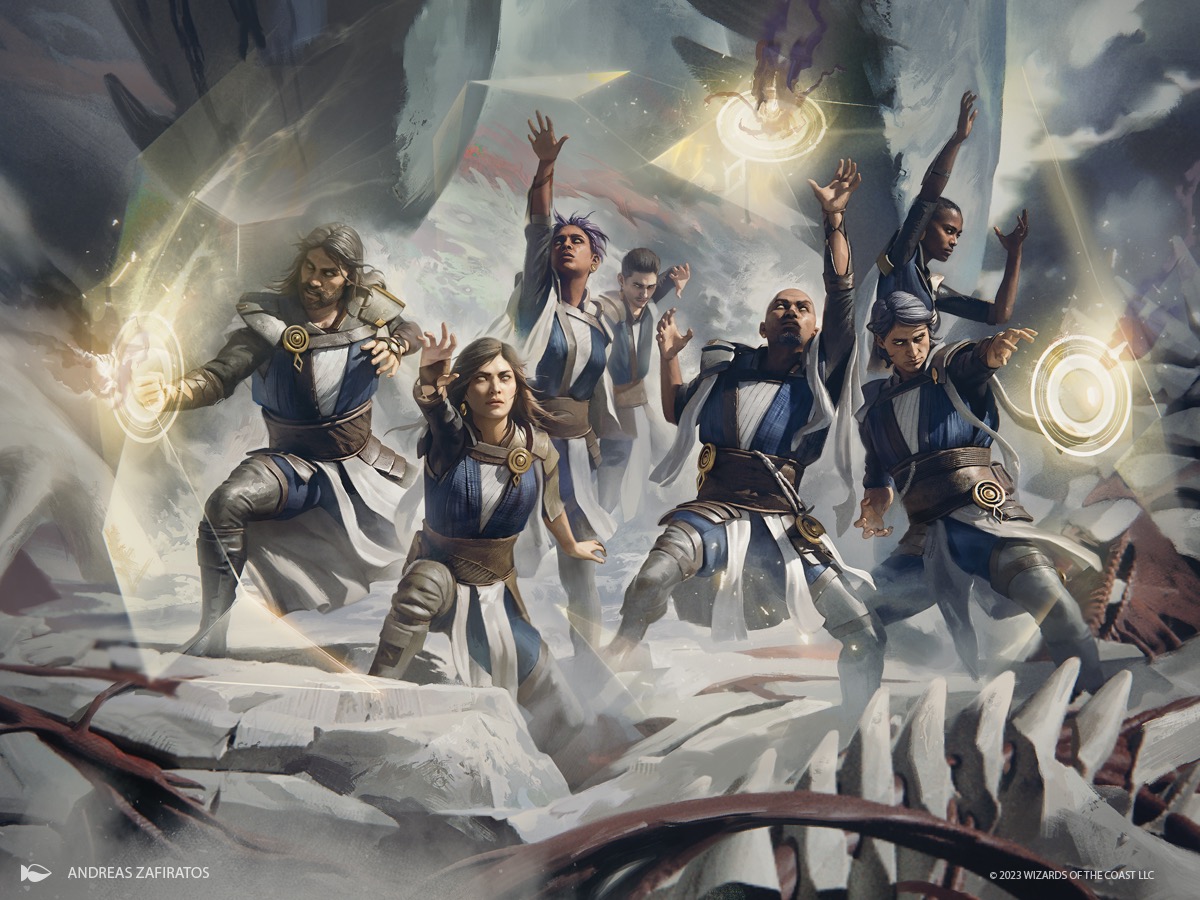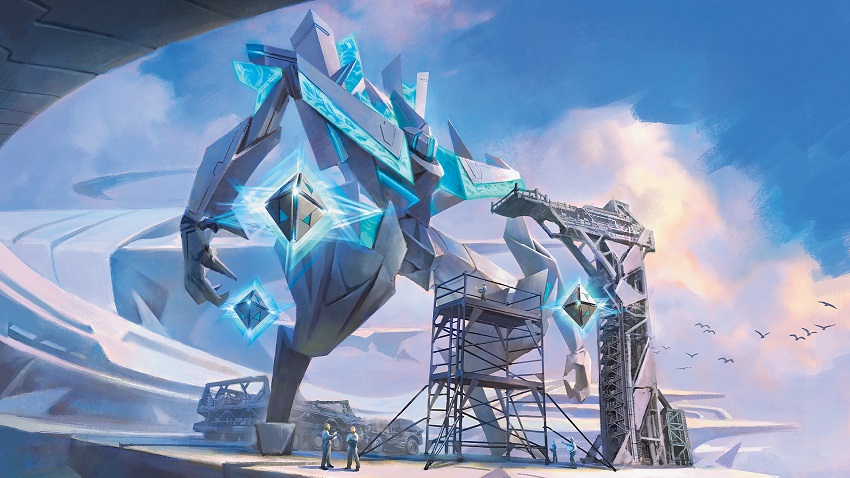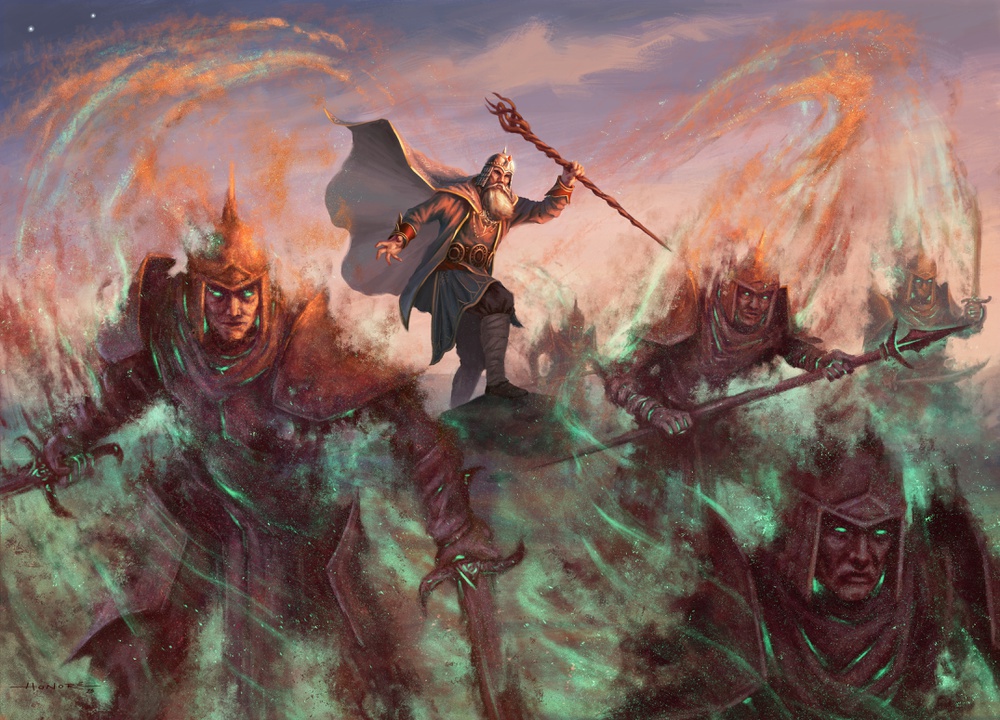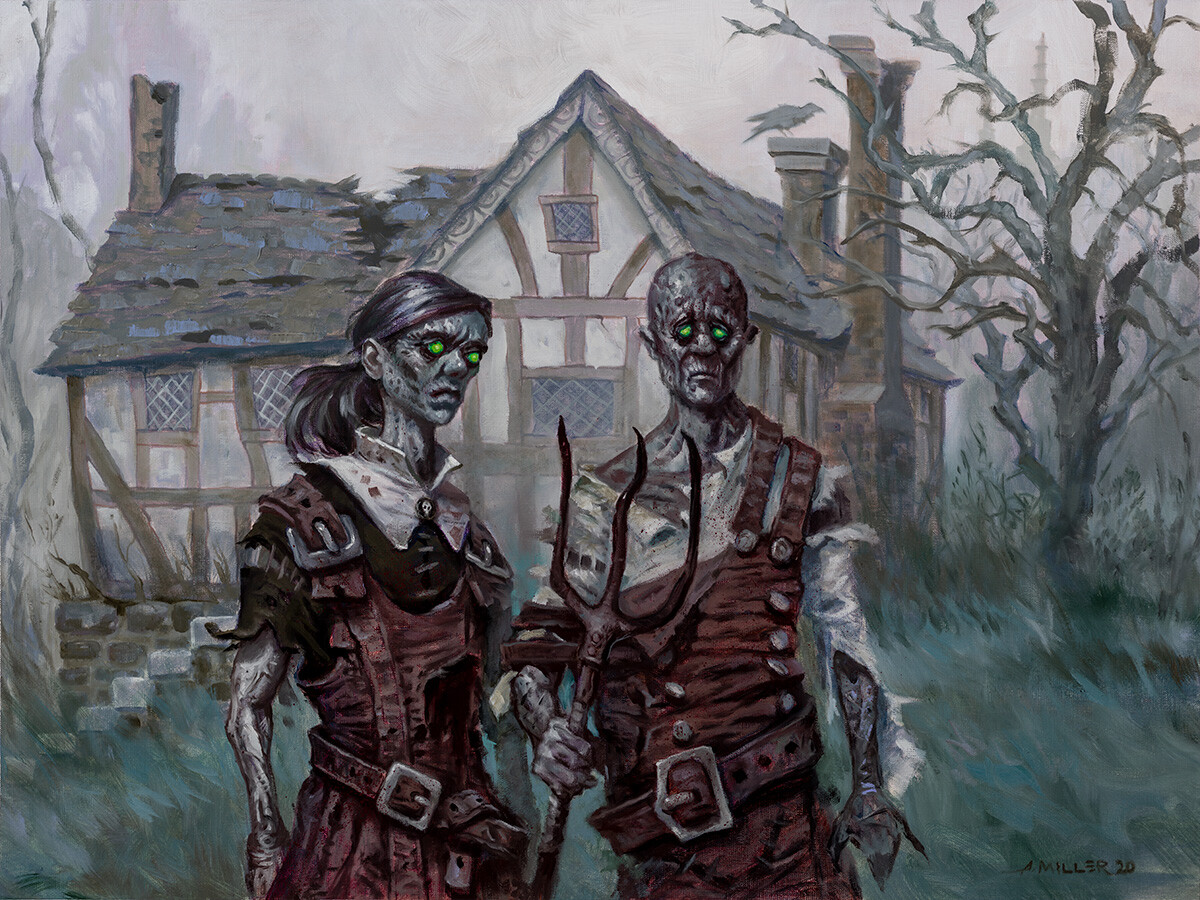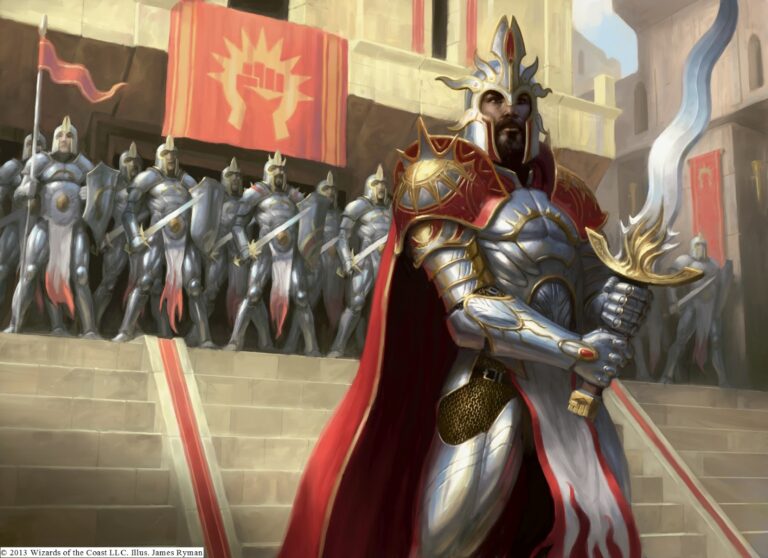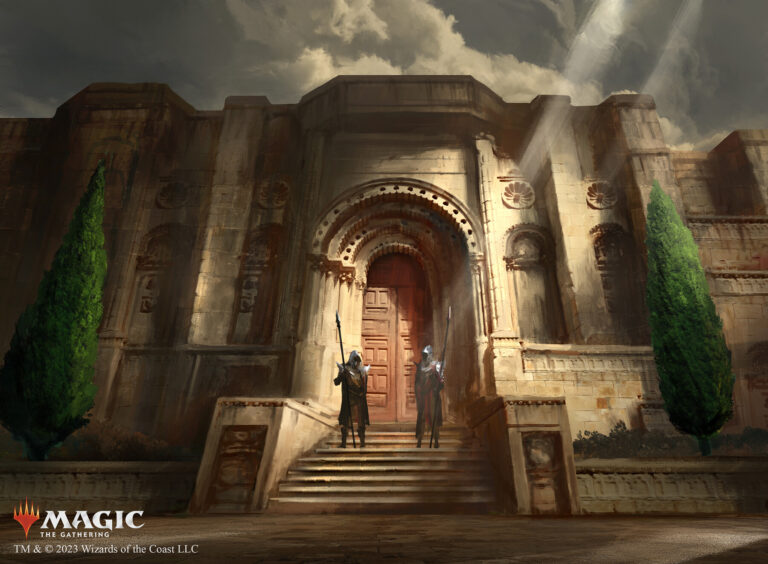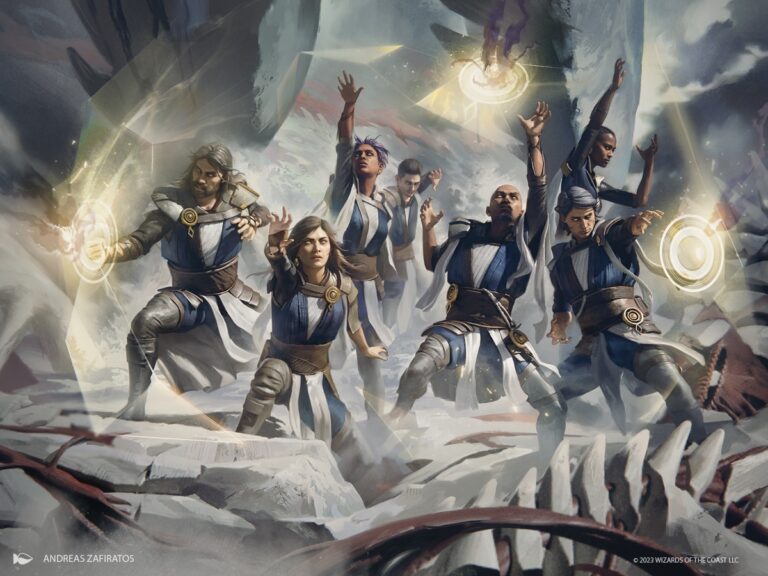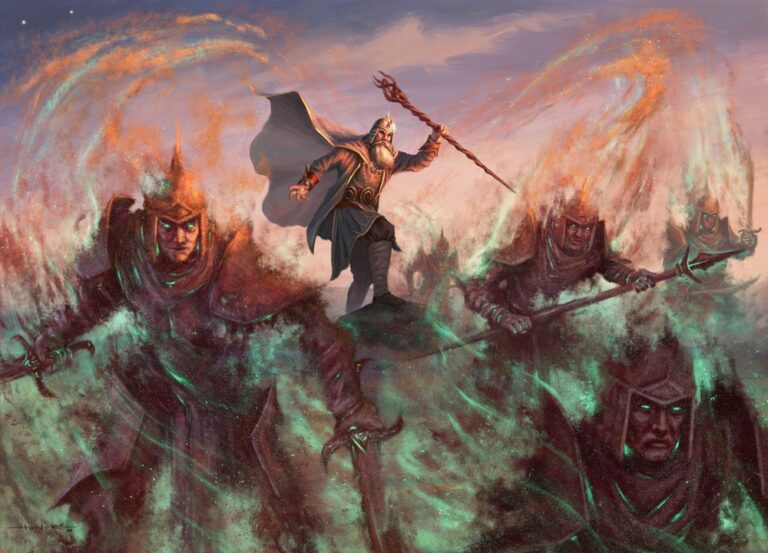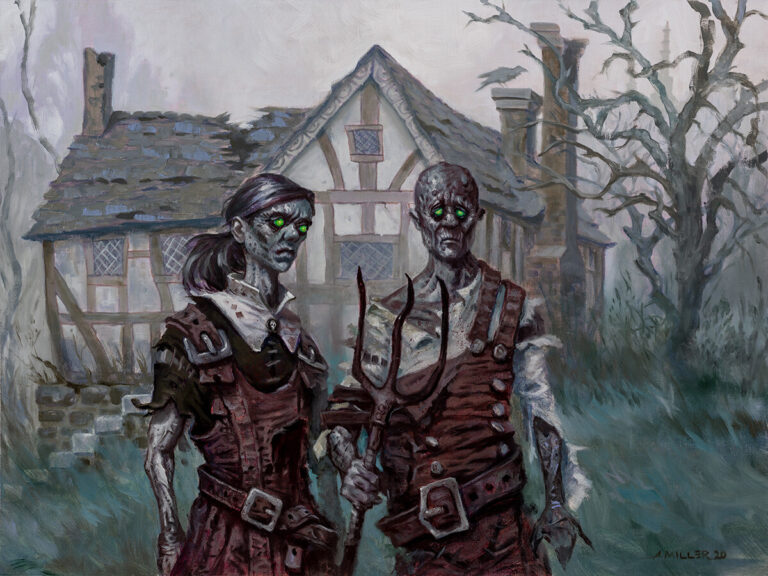Lately, with Magic always in spoiler season, keeping up with the new cards has become a monumental task. So, I’ve decided to focus my attention on what makes the Esper color combination shine, which I have a particular fondness for. I admit, this choice might not win me many friends at the table, but every time a new commander in these colors is revealed, I can’t help but wonder if there’s some hidden potential. It’s from this curiosity that today’s experiment is born: let’s kick off a new brewing series, where we’ll explore ideas, strategies, and decklists for new or overlooked commanders.
Let’s start this journey with The Master of Keys!
The Commander
The Master of Keys is a commander that doesn’t just soar through the air but also opens doors to surprising strategies (or so I hope)!
This commander has a scalable mana cost, letting us decide how powerful we want it to be by paying X mana: when it enters the battlefield, we mill X*2 cards from the top of our deck and put X +1/+1 counters on this flying creature.
So far, nothing too innovative… But there are additional lines of text that invite us to dream big: every enchantment in our graveyard can be casted again by paying its mana cost and exiling other cards from the graveyard. This mechanic not only offers the chance to reuse our most powerful enchantments but also opens up a range of creative strategies to explore!
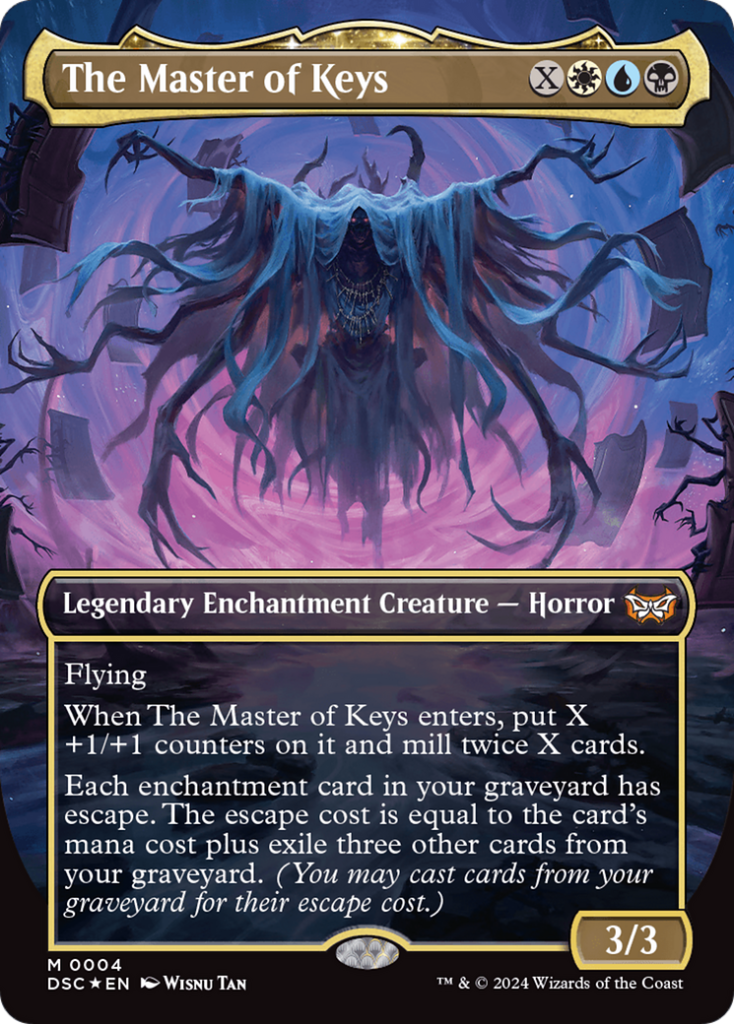
The first thought is inevitably to build some kind of Underworld Breach-style enchantment deck. So today, we’ll start with this approach and then explore other variants.
The following decklists are still a work in progress and require further refinement. In some cases, certain card choices have been intentionally made to distinguish the lists from one another, meaning they’re not yet fully optimized. The main goal is to highlight this commander’s potential. Feel free to explore the lists on Moxfield and take a look at the cards I’ve saved under the “considering” tab.
Infinite Mana!
Here we go again, every time I see a commander with X in its cost that could potentially close out a game, I try to build a list to generate infinite mana. I dreamed up (and haven’t yet given up on) such a list for The Cyber-Controller, with poor results. This time, however, we’ve got an extra color to work with, which opens the door to a fascinating combo using Auriok Salvagers + Lion’s Eye Diamond:
- Auriok Salvagers has an ability that lets us pay 1 white mana and 1 colorless mana to return an artifact with a converted mana cost of 1 or less from the graveyard to our hand.
- Lion’s Eye Diamond is an artifact that, by sacrificing it and discarding our hand, gives us 3 mana of any one color.
Here’s how the loop works:
- We sacrifice Lion’s Eye Diamond to generate 3 white mana.
- Using 1 white mana, we activate Auriok Salvagers’ ability to bring Lion’s Eye Diamond back from the graveyard to our hand.
- We repeat the process.
Each cycle gives us a net gain of 1 white mana. At this point, with infinite white mana, we can repeat the loop for every other color we need.
Now, assuming we can reliably insert and resolve this combo, what’s next?
Of course, we can cast our commander for X=∞ and mill our entire deck, gaining not only infinite mana but:
- our entire library in the graveyard (if we want to shuffle the graveyard back into the deck, we can add cards like Enhanced Surveillance);
- an infinitely large flying creature with +1/+1 counters;
- infinite storm counters.
Here are some ideas on how we can close out the game:
- We can use our commander’s ability to play Hopeless Nightmare from the graveyard and sacrifice it. The cards in our graveyard should be enough to pay the escape cost multiple times and win. Even though it’s not an enchantment, we could include Fruit of Tizerus for the same purpose.
- We can play Blind Obedience from the graveyard and keep looping Auriok Salvagers + Lion’s Eye Diamond, paying the extort cost each time we cast LED. Another option is Underhanded Designs.
- If we aren’t worried about cards like Endurance, we can cast Scavenger’s Talent from the graveyard and progress to its second level. Once again, with the Lion’s Eye Diamond loop, we’ll mill our opponent’s entire library.
- Chthonian Nightmare/Recurring Nightmare combined with infinite mana can create some interesting loops. We can sacrifice our commander and return the enchantment to hand to bring back Orcish Bowmasters, dealing 1 damage to the opponent. We cast the enchantment from hand, sacrifice Orcish Bowmasters, return the enchantment to hand, and target the commander. At this point, we repeat the cycle for infinite damage. If Orcish Bowmasters isn’t in the deck or is exiled, we can also keep “swapping” two creatures with a mana cost of 2 on the battlefield using Chthonian Nightmare to fuel our energy reserve and start a loop with Gonti’s Machinations. We can even continue swapping creatures on the battlefield (our commander + any other creature), adding creatures and using cards like Funeral Room, The Meathook Massacre, Balemurk Leech, Sage of Mysteries, Underworld Coinsmith.
- Let’s make things even more complex! We have the ability to cast instants and sorceries thanks to Founding the Third Path, casting this saga straight from its third chapter. Since our storm counter is potentially infinite, we’ll just need to exile and cast Brain Freeze/Tendrils of Agony. This saga can also be used for other purposes, like casting Replenish.
- We can cast Animate Dead on Laboratory Maniac, then draw a card with Omen of the Sea. If we think this combo is too fragile, we could opt for Builder’s Talent, which at level 3 allows us to put Jace, Wielder of Mysteries onto the battlefield, making it harder to remove than a creature.
- Thanks to Auriok Salvagers, we can return Lavaspur Boots to hand, cast this artifact, and equip our infinitely large flying commander. We can remove any blockers using Parallax Wave.
- After sending Lion’s Eye Diamond to the graveyard enough times and milling our deck, we could enchant our opponent with Fraying Sanity.
- We can cast Tinybones Joins Up (or an enchantment that reanimates Orcish Bowmasters) and proceed with the Animate Dead (and similar) + Abdel Adrian, Gorion’s Ward combo. When Abdel Adrian, Gorion’s Ward enters the battlefield, you exile any number of nonland permanents you control. For each exiled permanent, you create a 1/1 white Soldier token. If Abdel Adrian is brought back with a reanimation spell like Animate Dead, the enchantment attaches to him. When Abdel enters, you exile Animate Dead (along with other permanents), creating a Soldier token. Exiling Animate Dead sacrifices Abdel Adrian, sending him back to the graveyard and bringing the enchantment back to the battlefield. You can then target Abdel again with Animate Dead, repeating the cycle indefinitely. The combo ends when you choose not to target Abdel Adrian with the reanimation spell.
- We could cast Awakening Hall (or Animate Dead + Dance of the Dead or repeatedly use From the Catacombs) to bring back any combination of creatures that lead to victory, like Deadeye Navigator + Inquisitor Exarch (no more Orcs!) and, using infinite mana, blink Inquisitor Exarch infinite times.
Combo 1
This list aims to generate infinite mana with Auriok Salvagers + Lion’s Eye Diamond, then take advantage of the infinite casts of Hopeless Nightmare to deal damage to our opponent or shift the focus to Lavaspur Boots. The latter can be retrieved from the graveyard using Auriok Salvagers‘ ability, then equipped to the commander, who, with infinite X/X counters, becomes a lethal flying threat, ready to close the game with a single attack.
Combo 2
Another combo list is inspired by the Legacy format deck Cephalid Breakfast, an archetype known for quickly milling the entire deck. In this version, we can generate infinite mana again with Auriok Salvagers + Lion’s Eye Diamond for infinite mana + commander cast, or with Cephalid Illusionist, which we will target with Nomads en-Kor, Shaman en-Kor, Shuko, or Lightning Greaves.
Once the entire library is in the graveyard, we can finish the game by sacrificing creatures like Cephalid Illusionist, Narcomoeba, and a third creature (perhaps Sacred Cat) to flashback Dread Return, reanimating our win condition from the graveyard. If we have enough mana, we can also use Animate Dead, Dance of the Dead, or Reanimate from our hand. Another path is to generate infinite colored mana, mill the deck with the commander, and cast Animate Dead, From the Catacombs, or Priest of Fell Rites for their escape cost to bring our win condition to the battlefield.
Which creature will we reanimate? In our format, we don’t have access to Thassa’s Oracle, which would be the perfect creature to reanimate after milling the entire deck. So, we’ll rely on Lotleth Giant to deal enough damage to our opponent.
We also have secondary plans, like attacking with our commander or the Abdel Adrian, Gorion’s Ward + Animate Dead combo.
Through Combat
Thinking about an enchantment-centered version, the best path could be leaning toward a Voltron archetype, aiming to power up the commander as the primary win condition.
In this build, our goal is to attack with The Master of Keys, enchanted with auras like Ethereal Armor, to deal lethal damage as quickly as possible. Meanwhile, we’ll keep playing enchantments both from our hand and the graveyard, maintaining constant pressure on the board and increasing the commander’s strength each turn. The strength of a Voltron approach lies in balancing board control with a growing threat that can win the game in a few turns.
Another option is to rely less on the escape ability of our enchantments, expanding the deckbuilding possibilities. We could build a list focused on damage dealt by our creatures and commander, using the escape ability only occasionally. In this case, we’d mainly include enchantments that help us control the battlefield, allowing our creatures to deal damage safely and close out the game.
Reanimator
If we want to build this deck as a reanimator version, we inevitably have to compare it to another Esper deck in the format: Aminatou, the Fateshifter.
So, let’s look at the main advantages of the two commanders:
| The Master of Keys | Aminatou, the Fateshifter |
| Allows us to mill cards and fill the graveyard. Lets us cast enchantments like Animate Dead from the graveyard. Unlike a planeswalker, it can attack and block. | Aminatou’s ability to blink permanents lets us reuse powerful “Enter the Battlefield” abilities. Aminatou can blink enchantments like Animate Dead to switch reanimated creatures, creating interesting synergies. The +1 ability can be used in combination with other cards that shuffle the deck to filter our hand. |
The list I’m proposing here is very similar to the one I presented in the ReAminatou primer.
As for the reanimator version, you could also consider adding this combo to mill your entire deck or enough cards to find what you need (source). Requirements:
- The Master of Keys on the battlefield
- Necromancy in the graveyard
- Peregrine Drake in the graveyard
- Either Chronic Flooding or Scavenger’s Talent (level 2)
- At least 3 lands that can produce 2 black mana (2B)
These are the steps:
- Cast Necromancy from exile, exiling 3 cards from your graveyard. When it enters the battlefield, target Peregrine Drake. This can be done at any time during any turn.
- Put Peregrine Drake on the battlefield, triggering its ability to untap at least 3 lands that can produce 2B.
- Move to the end step and cleanup phase. Necromancy will sacrifice itself, and as a result, Peregrine Drake will also be sacrificed. If you’re using Scavenger’s Talent, it will trigger twice, milling 4 cards.
- When the stack is empty during cleanup, cast Necromancy again to restart the loop (514.3a*). If you’re using Chronic Flooding, it will trigger and put cards into your graveyard, making it easier to escape Necromancy again. A new cleanup step is generated, but the mana doesn’t carry over between phases.
- Continue the loop until you mill your entire deck, if you have a combo or the cards you need.
*514.3a. At this point, the game checks to see if any state-based actions would be performed and/or any triggered abilities are waiting to be put onto the stack (including those that trigger "at the beginning of the next cleanup step"). If so, those state-based actions are performed, then those triggered abilities are put on the stack, then the active player gets priority. Players may cast spells and activate abilities. Once the stack is empty and all players pass in succession, another cleanup step begins.
Control
As the final list, I’ve left the most boring one, and there’s not much to say here. I decided to include a two-card combo: Jace, Wielder of Mysteries and Tainted Pact, a classic win condition for control decks. The peculiarity of this list lies in the inclusion of cards like Solitary Confinement and Island Sanctuary, which, if combined with enchantments playable from the graveyard or with Shorikai, Genesis Engine, allow us to mitigate the card disadvantage while maintaining solid defense against opponent threats. These protection elements give us the time needed to prepare our winning combo or simply control the board until we are ready to finish the game.
Conclusions
As you go through the decklists, you’ve likely noticed the frequent inclusion of certain enchantments. This is because I consider cards like Static Prison, Dress Down, Omen of the Sea, Parallax Wave, and Parallax Nexus to be among the most powerful and versatile options for this archetype. These enchantments provide immediate or long-term value, perfectly synergizing with the deck’s mechanics, especially the commander’s escape ability.
In addition, here are some other cards you might want to consider for further refining the deck:
- Cumulative upkeep enchantments like Mystic Remora or Ancestral Knowledge.
- Enchantments that can be sacrificed or sent to the graveyard, such as Alseid of Life’s Bounty, Curse of Silence, Seal of Removal, Angelic Renewal, Contamination, Second Chance, Hesitation, Standstill, Into the Pit, Shark Typhoon, Seal of Cleansing, and Energy Field.
- Auras for enemy permanents like In Too Deep, Imprisoned in the Moon, Witness Protection, and Treachery.
- Cards to reduce enchantment costs or draw from enchantments, such as Inquisitive Glimmer and Entity Tracker.
- Enchantment tutors like Moon-Blessed Cleric, Idyllic Tutor, and Search for Glory.
- Cards that can return enchantments from the graveyard to the battlefield, such as Replenish, Redress Fate, and Dance of the Manse.
- Cards that let you replay enchantments from the graveyard like Hall of Heliod’s Generosity or Lurrus of the Dream-Den.
- Life-paying value enchantments like Necropotence, Necrodominance, and Black Market Connections.
- Thing in the Ice, which doesn’t bounce our commander when it flips into Awoken Horror.
- Enchantments that target specific colors, such as Coral Net, Mind Harness, and the Rune of Protection cycle (Green, Black, Red, White).
Before wrapping up, here are a few ways to generate infinite mana, though they’re not particularly suited to this commander or Centurion.
We can produce infinite white/blue mana throught Teferi, Time Raveler + Displacer Kitten + Mox Amber. Here’s how it works: Cast Mox Amber, triggering Displacer Kitten to blink Teferi. Tap Mox Amber for white or blue mana, then use Teferi’s second loyalty ability to return Mox Amber to your hand and draw a card. You can repeat this loop to generate infinite mana and draw your entire deck. However, this combo is difficult to assemble and also requires a way to discard drawn cards into the graveyard.
A similar combo involves Lurrus of the Dream-Den + Displacer Kitten + Lotus Petal. You sacrifice Lotus Petal for mana, then cast it again from your graveyard with Lurrus. Displacer Kitten blinks Lurrus, allowing you to loop the process for infinite colored mana and an infinite storm count.
Lastly, here are some two-card combos I’d avoid, but I’ll just list them:
- Pili-Pala + Grand Architect
- Rings of Brighthearth + Basalt Monolith
- Power Artifact + Basalt Monolith
- Palinchron + Phantasmal Image
- Palinchron + High Tide
That wraps up our exploration of The Master of Keys. Like all good brainstorming sessions, this is just the beginning. There are definitely tweaks and adjustments to be made, but I hope these lists and ideas have inspired you to try out new strategies.
Whether it’s a lightning-fast combo, an unstoppable assault, or constant control, The Master of Keys definitely has the potential to shine at the table. Now it’s your turn: what’s your idea to make this commander stand out? I can’t wait to see your builds and discuss new ideas in our brewing column. Happy brewing!
Written by
Valentino Manicone

